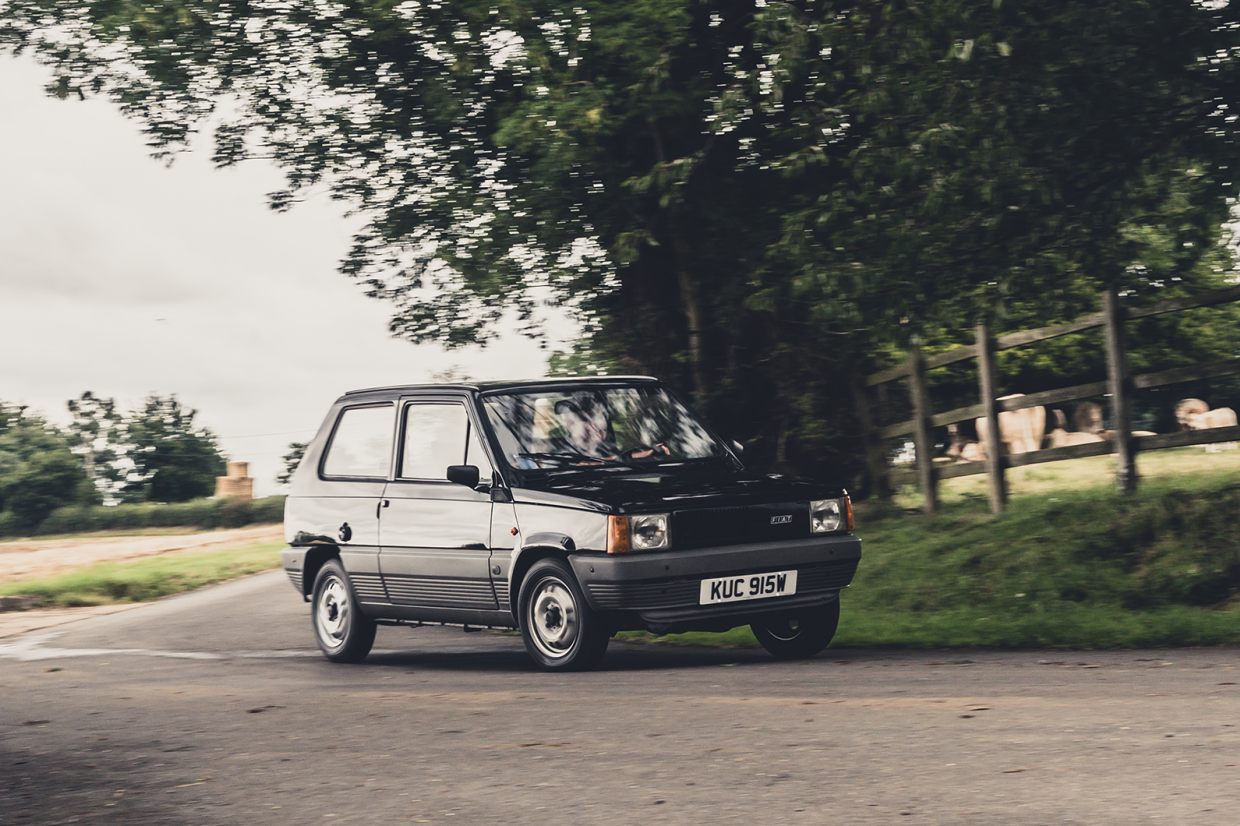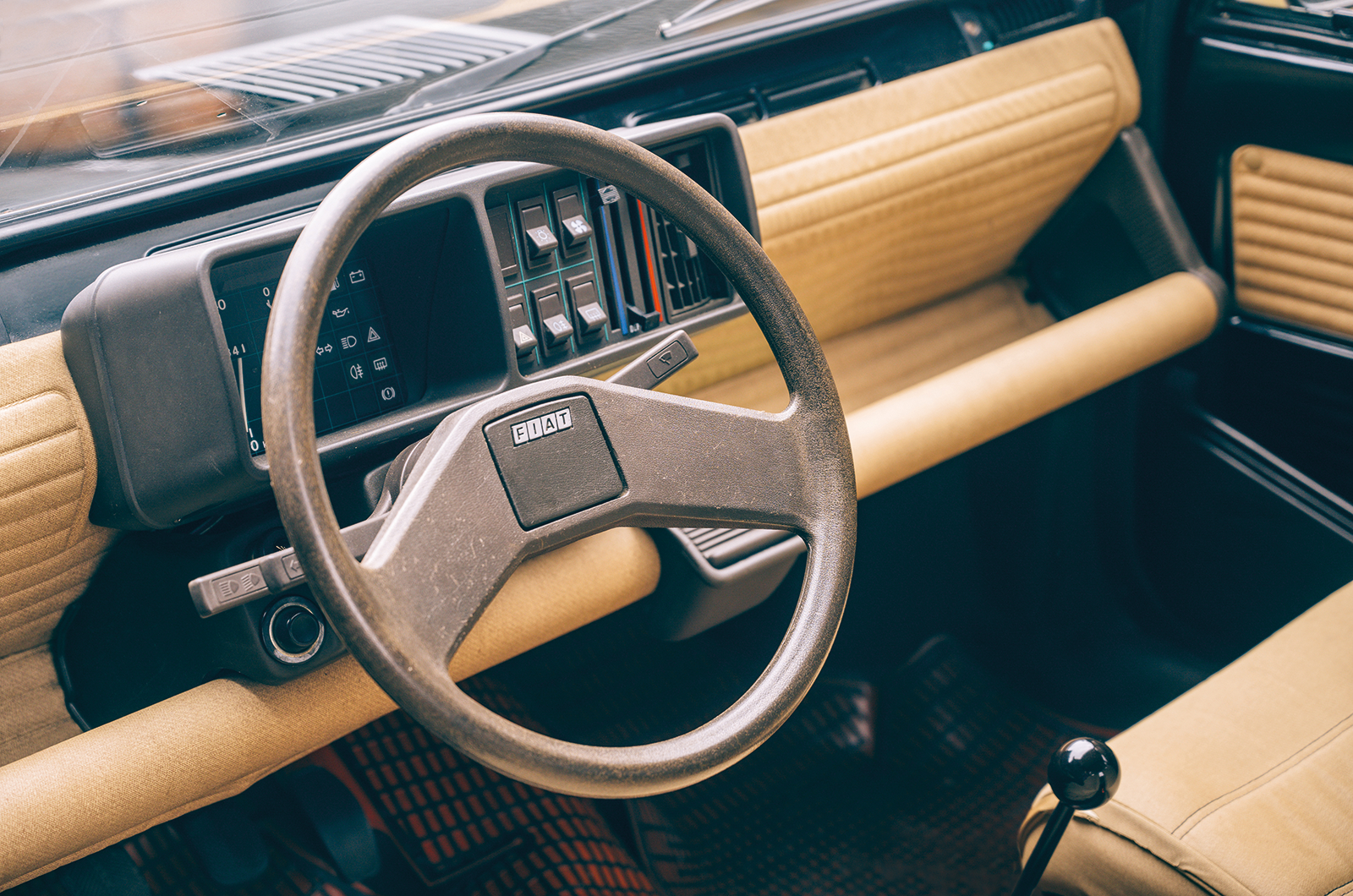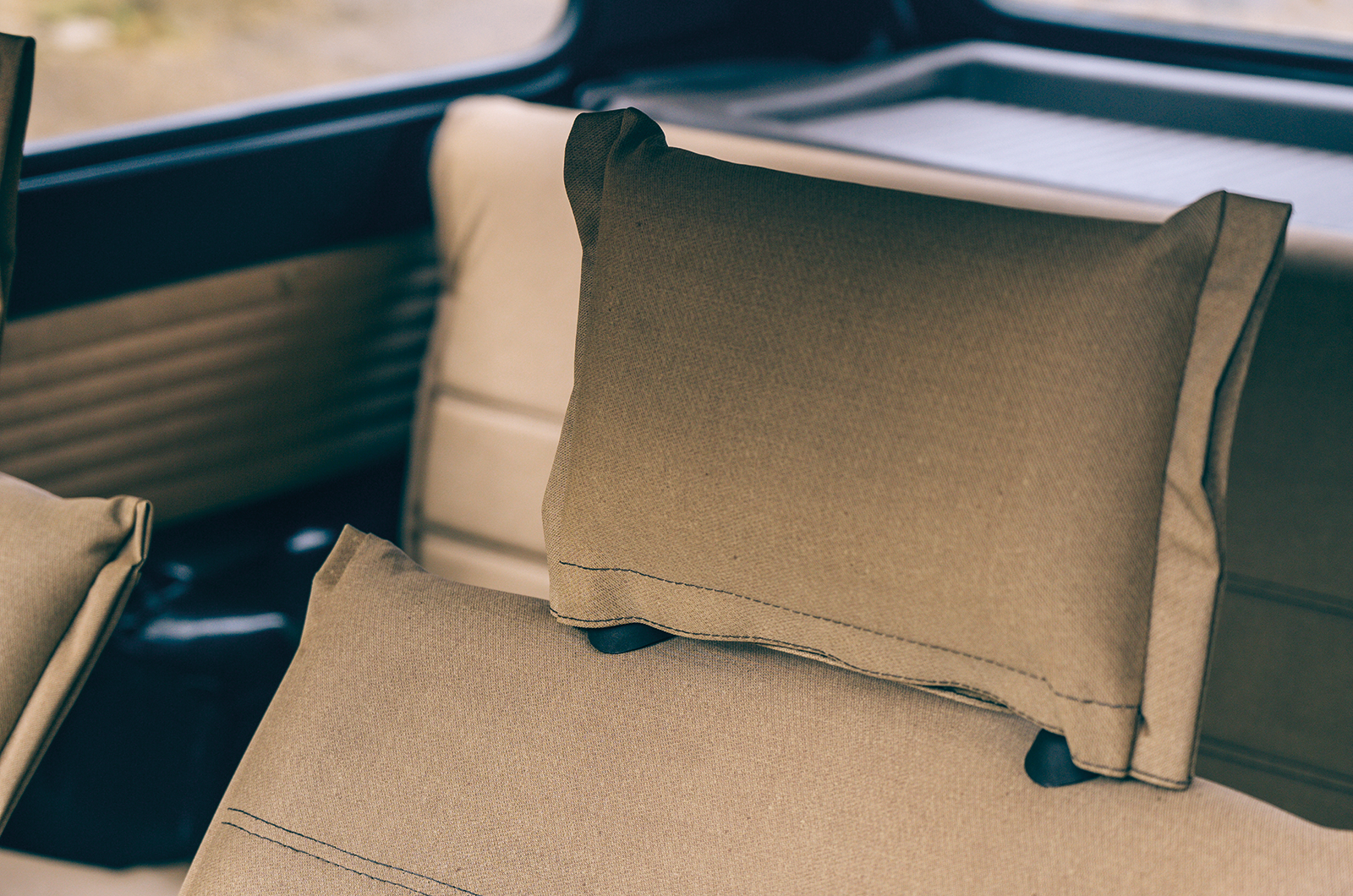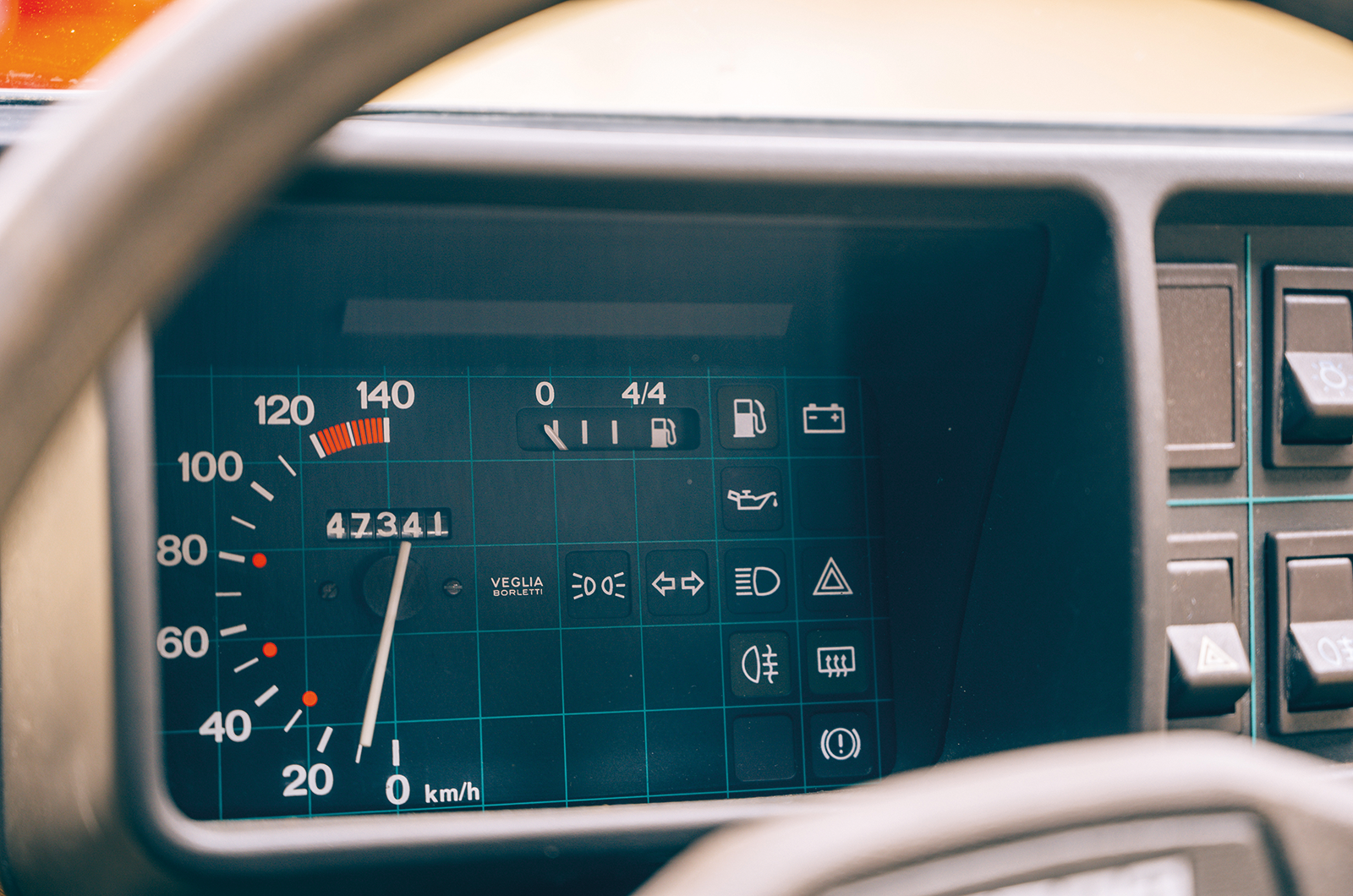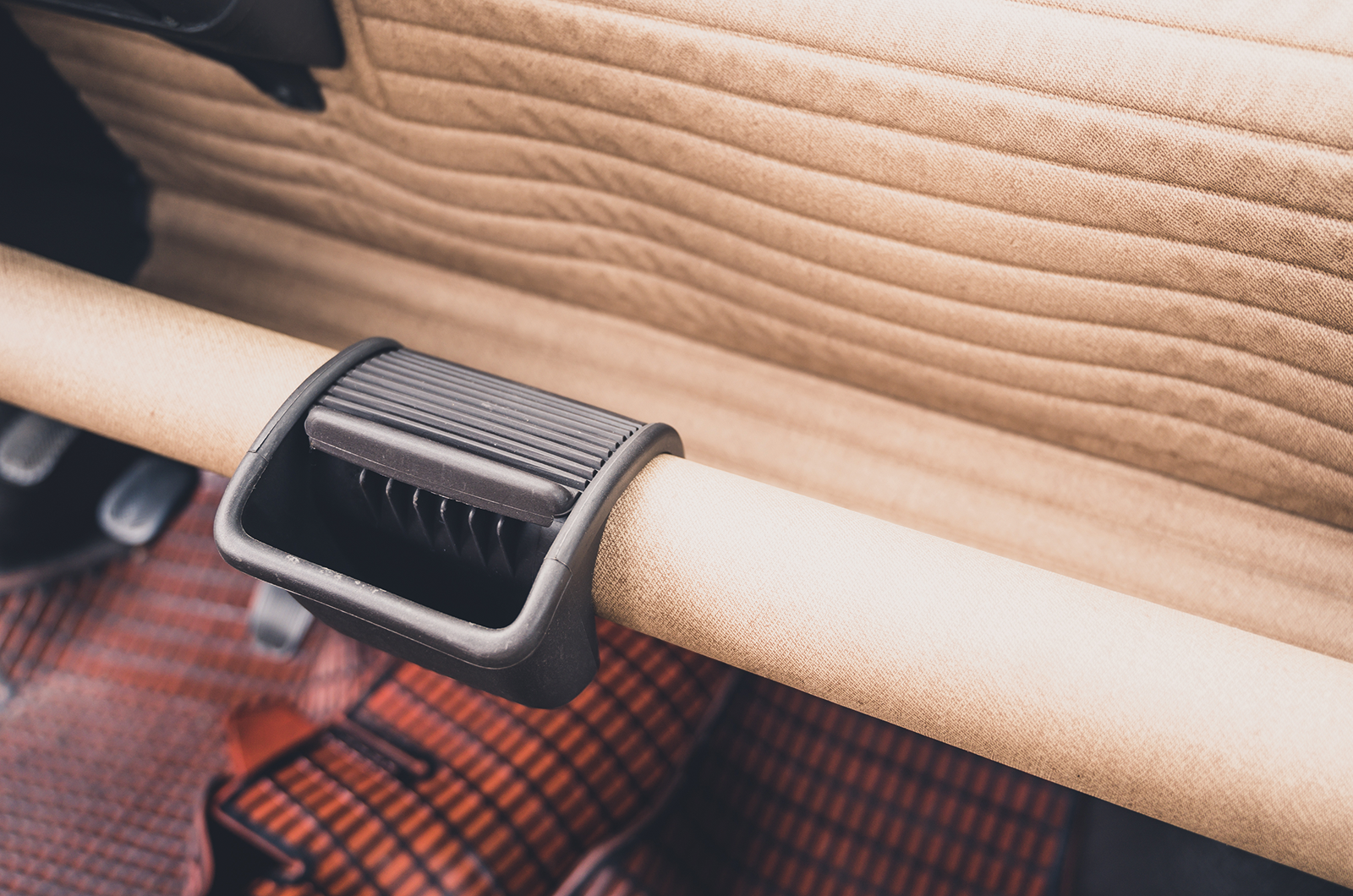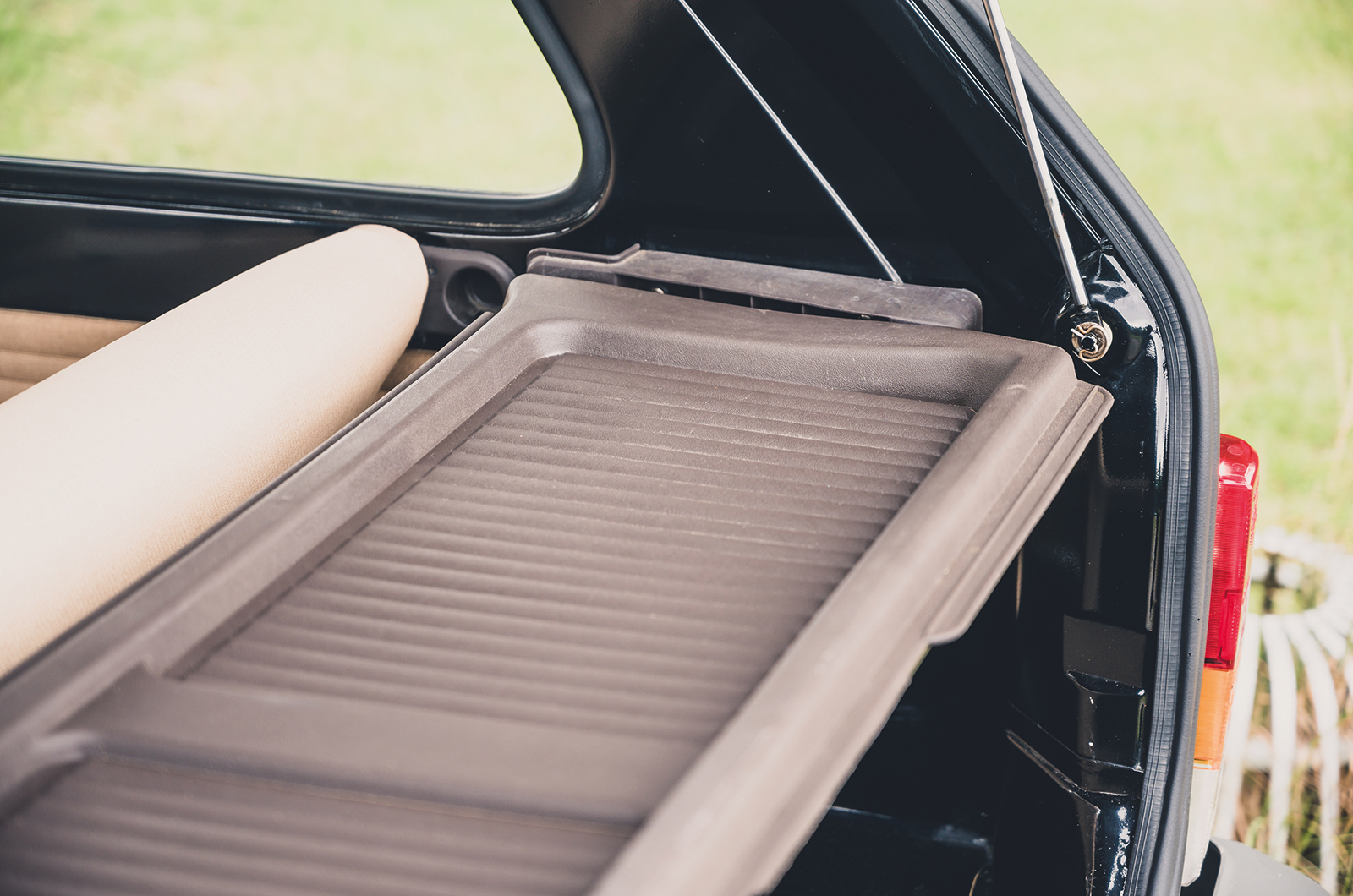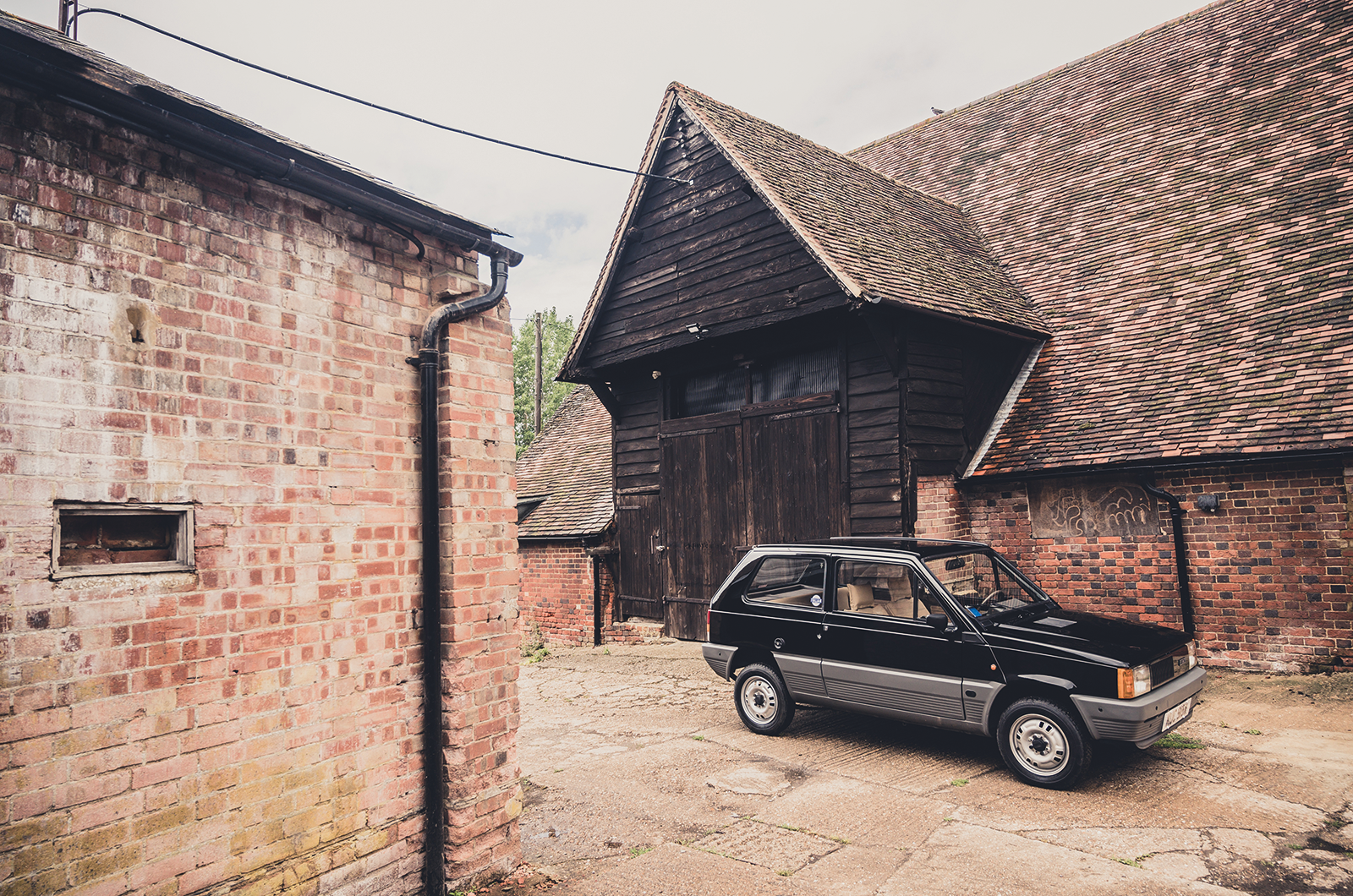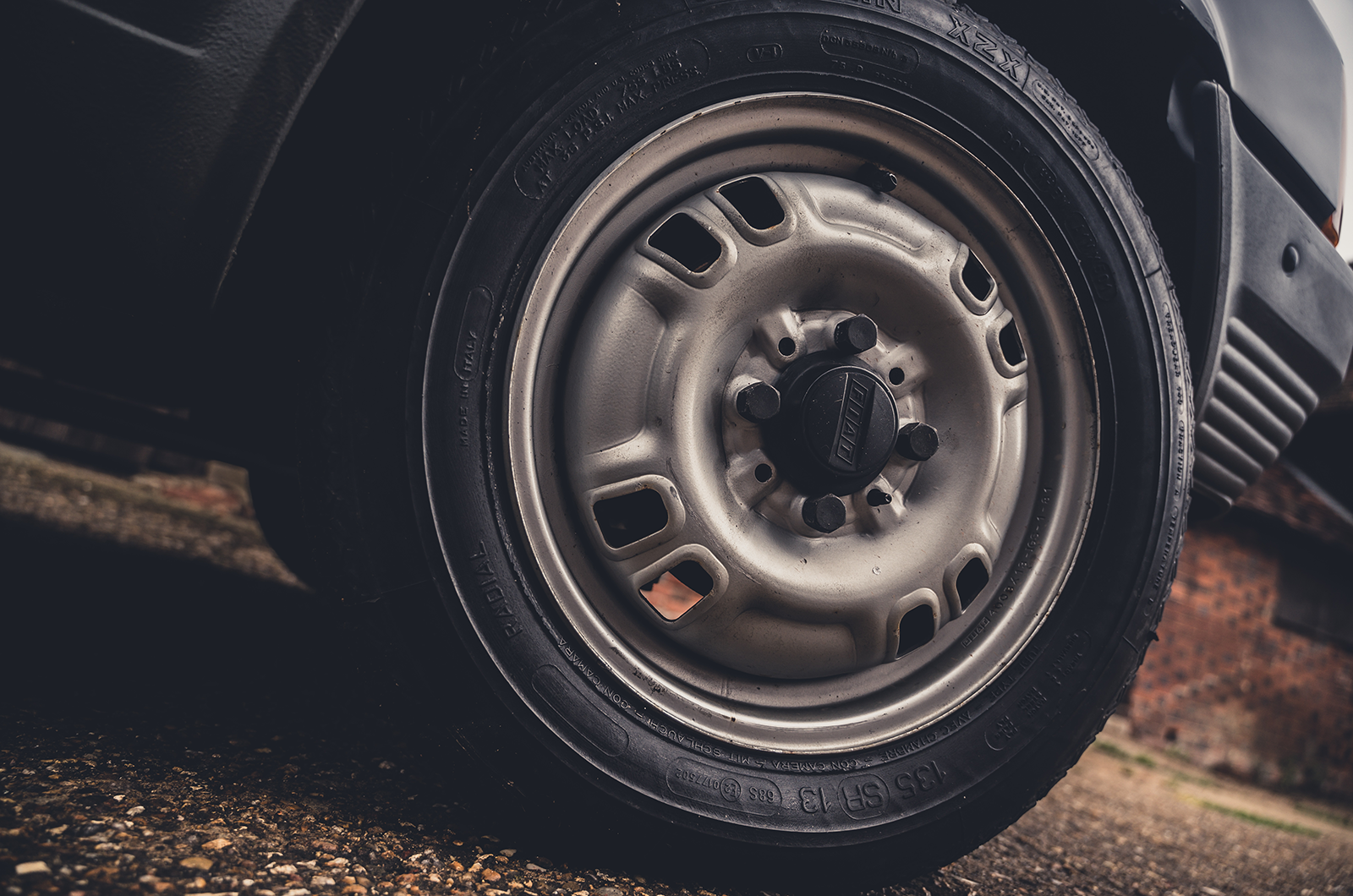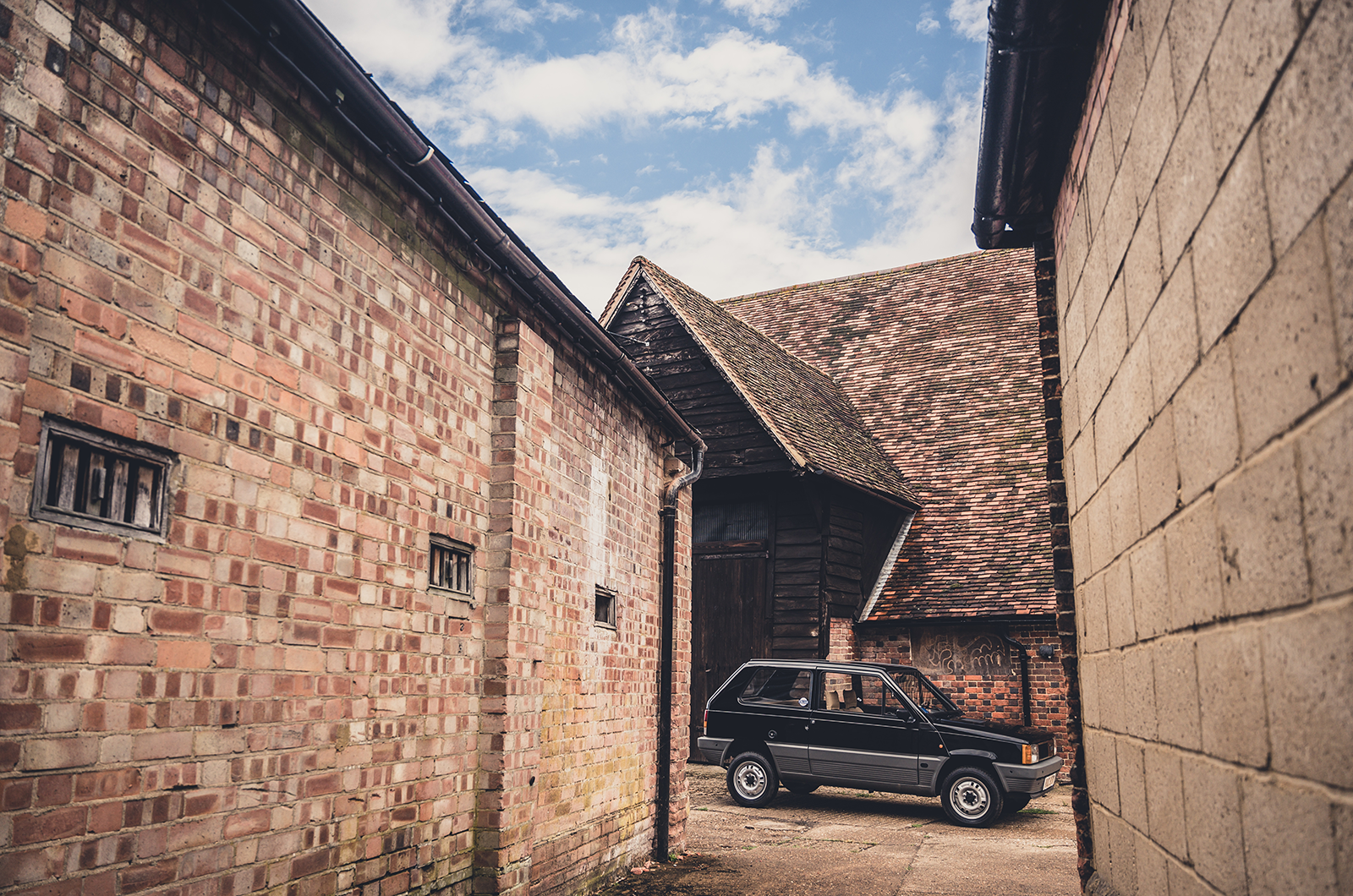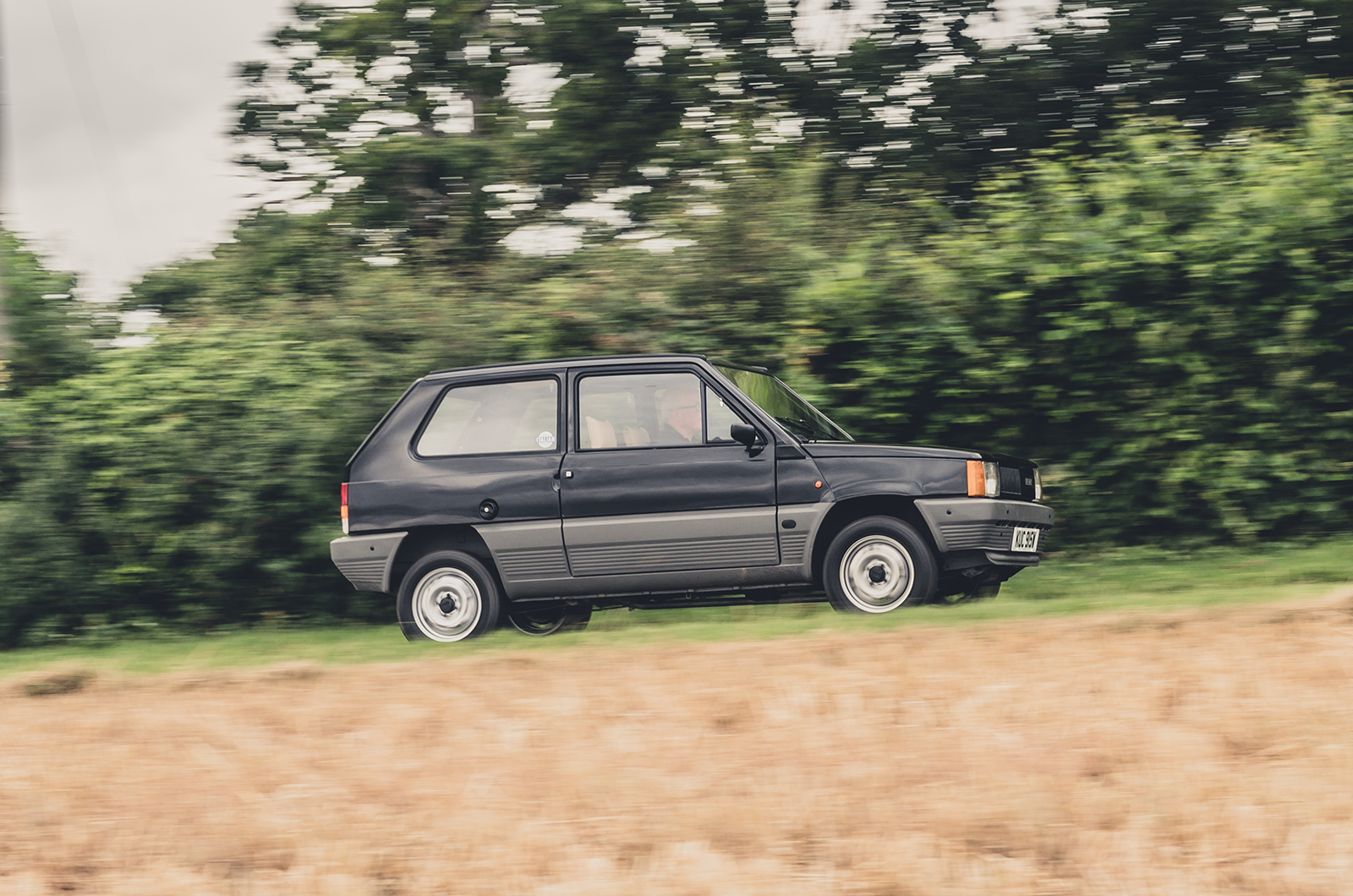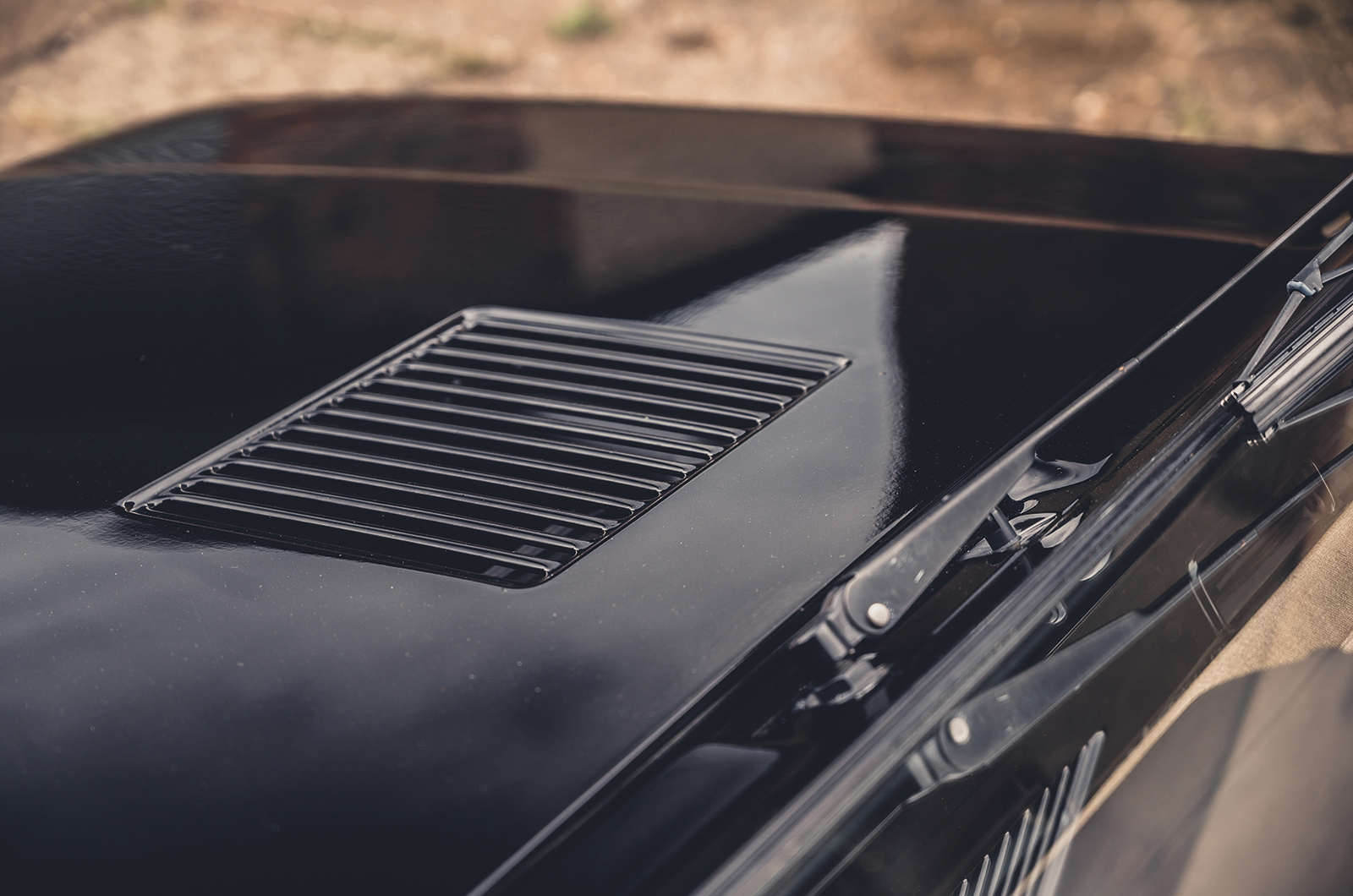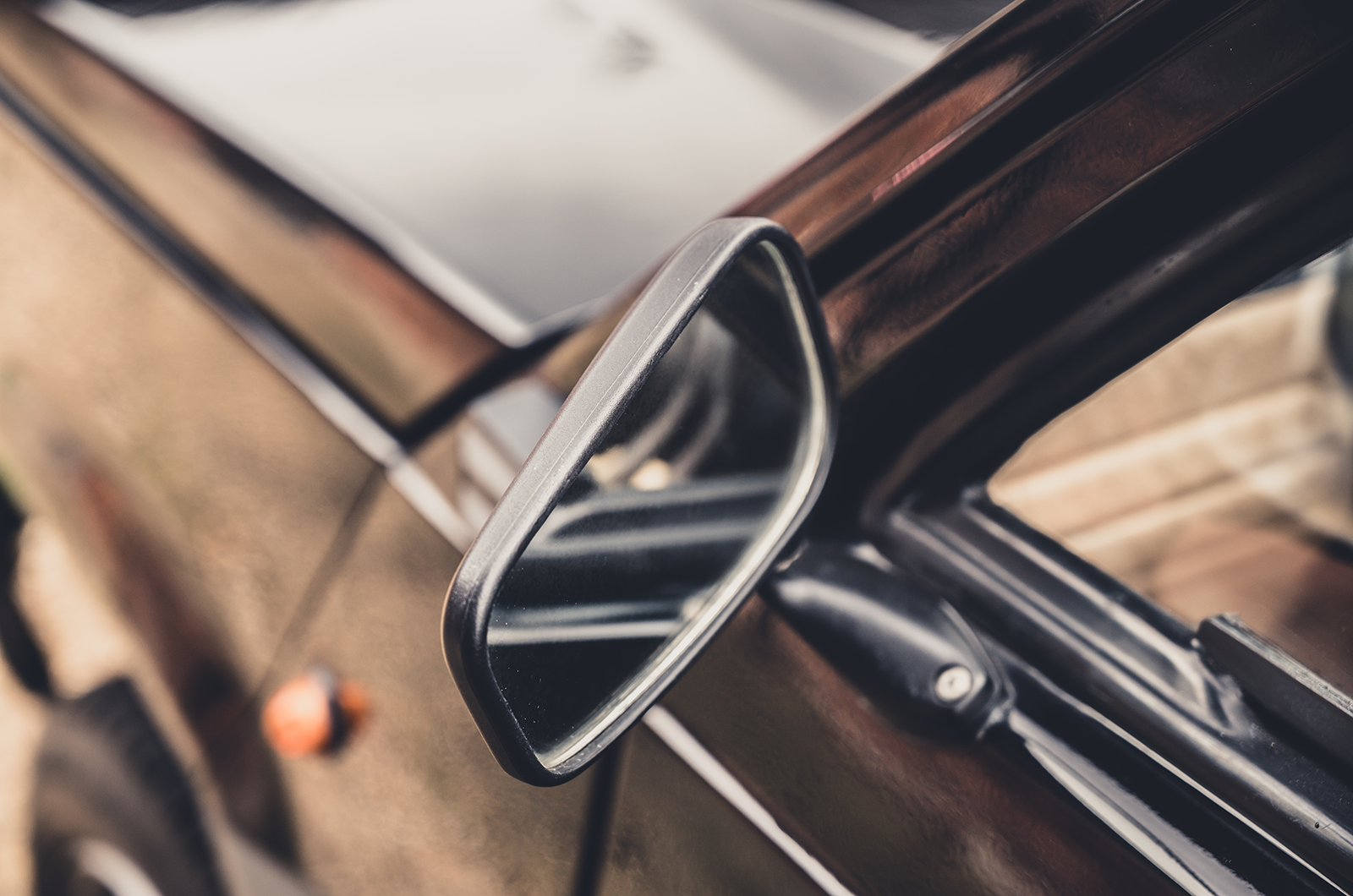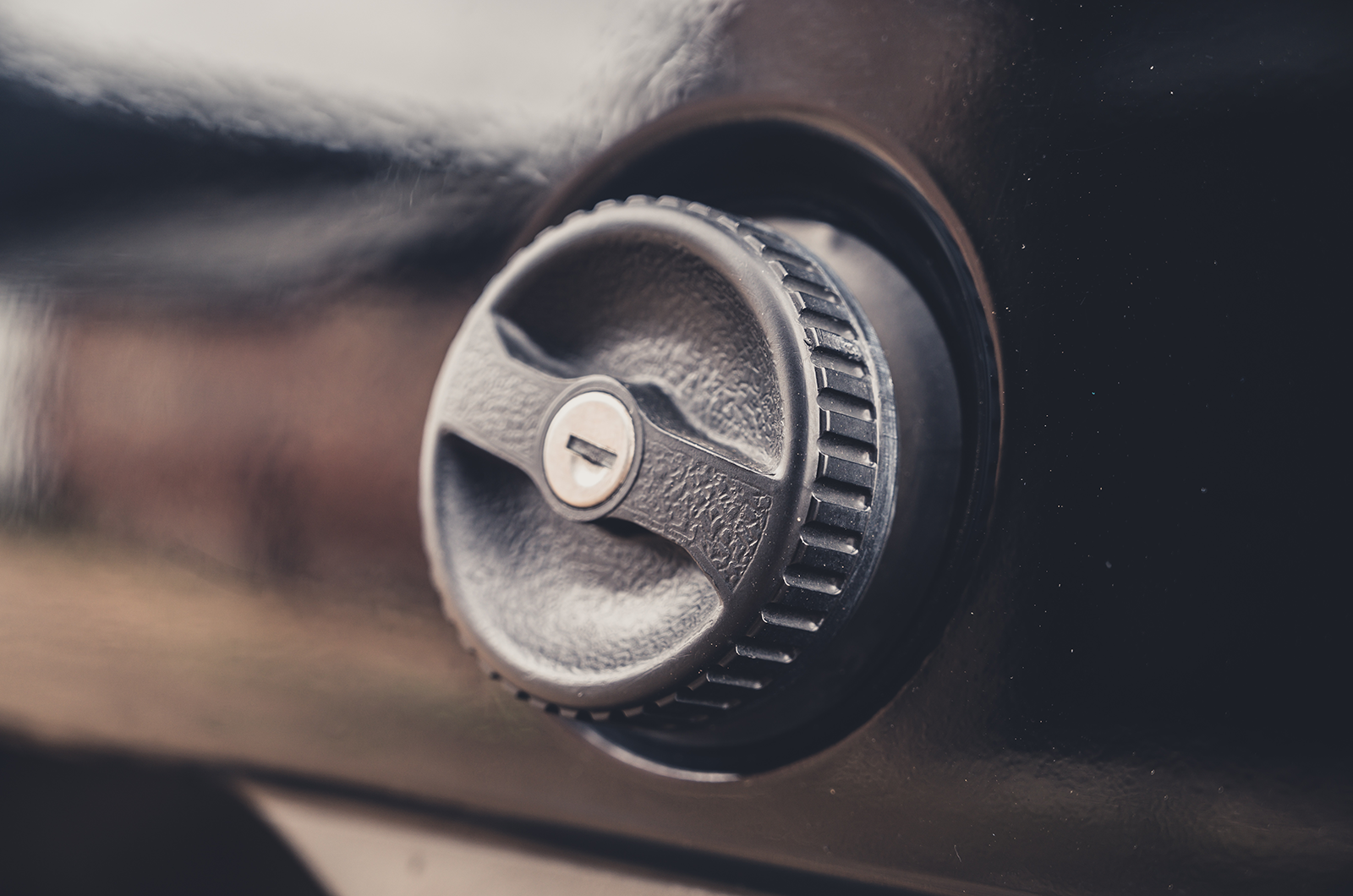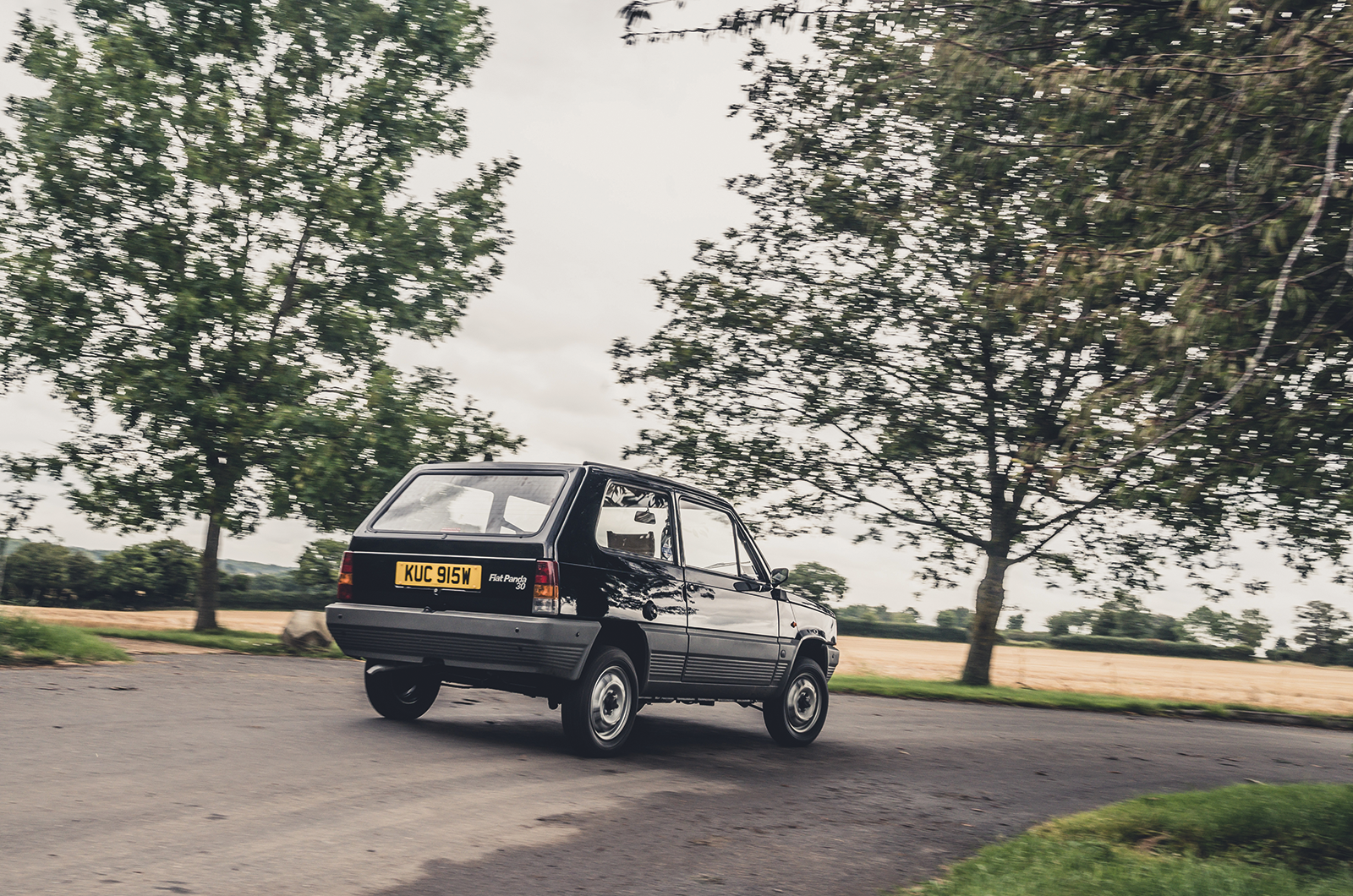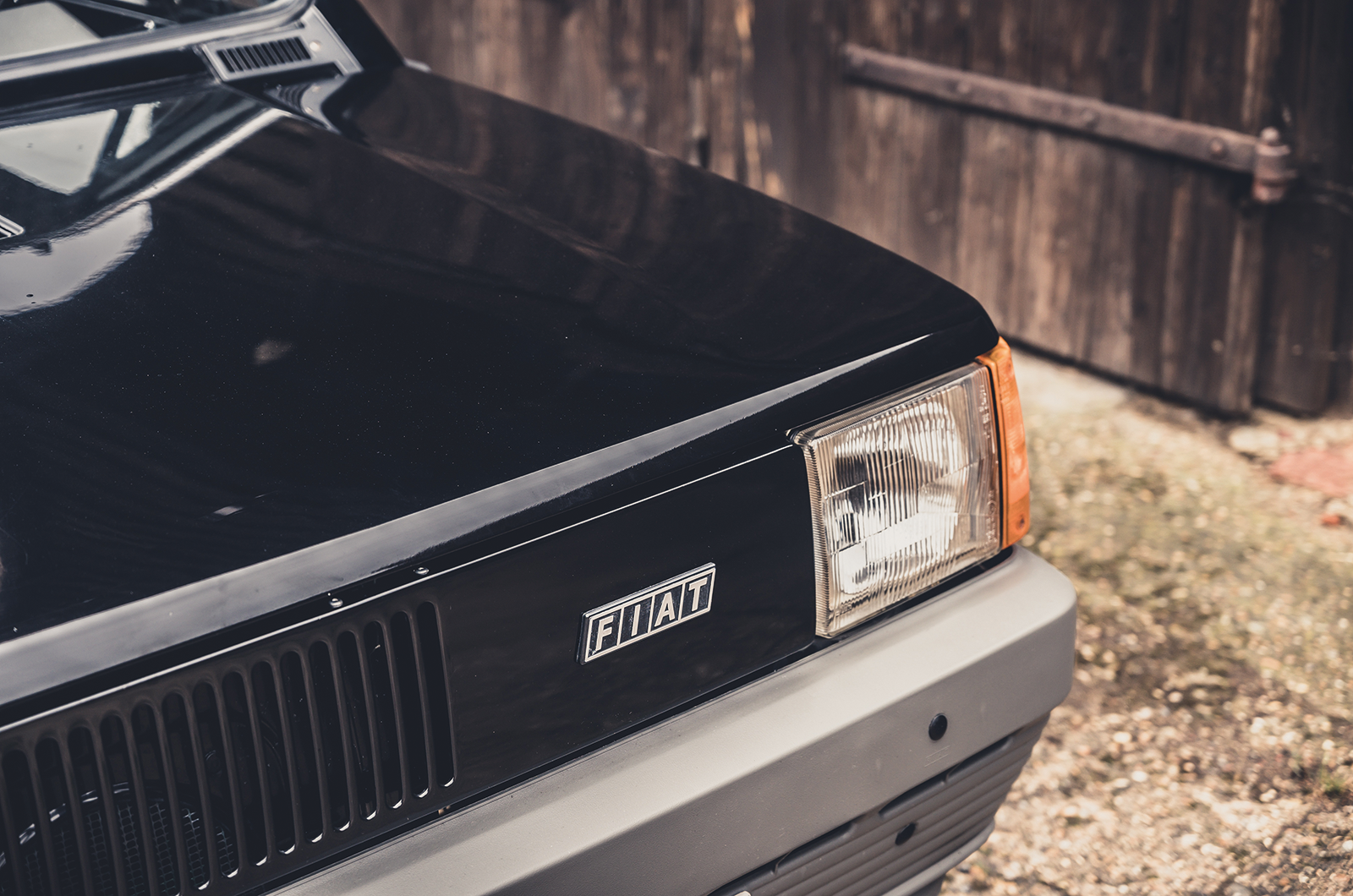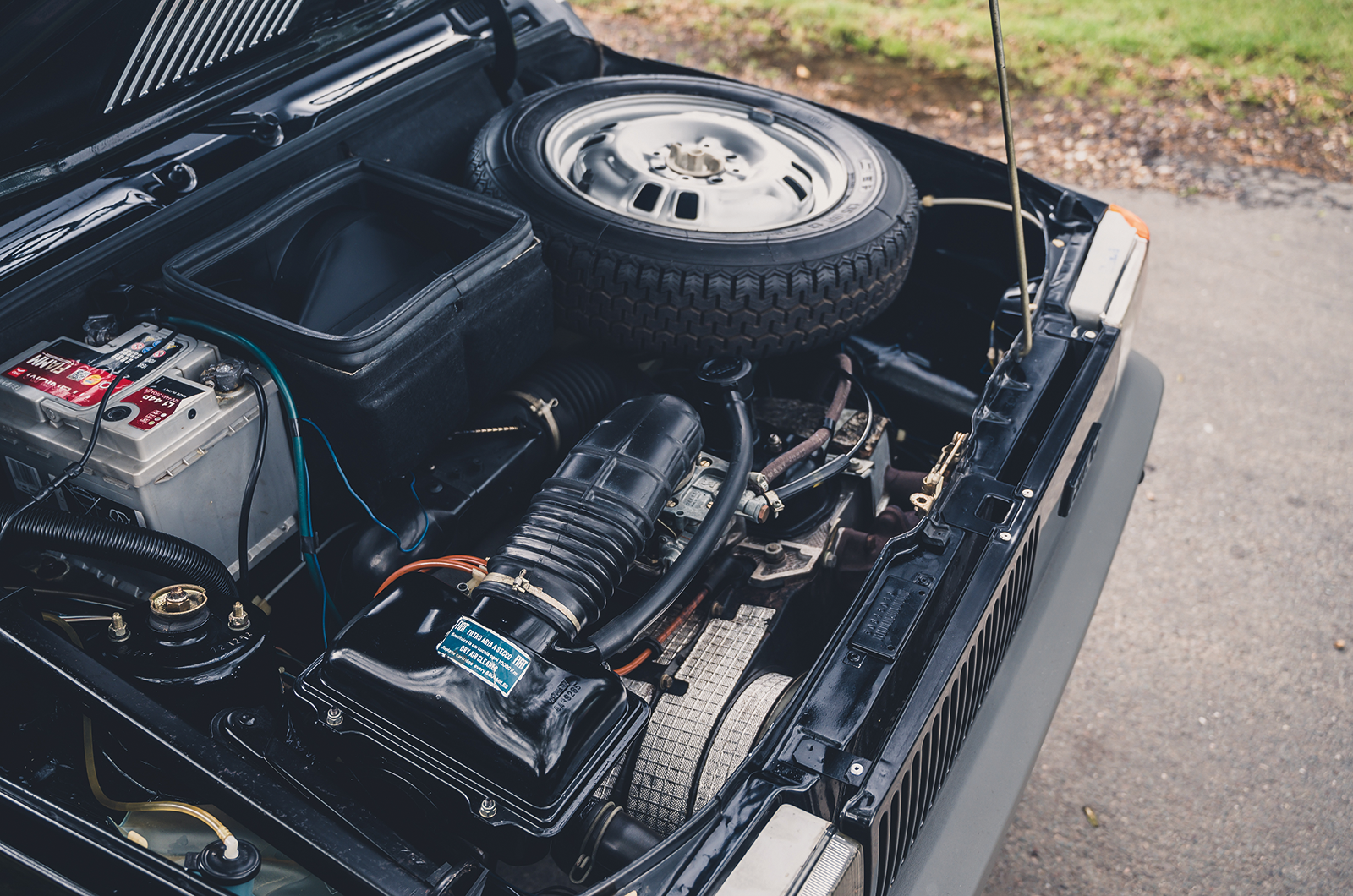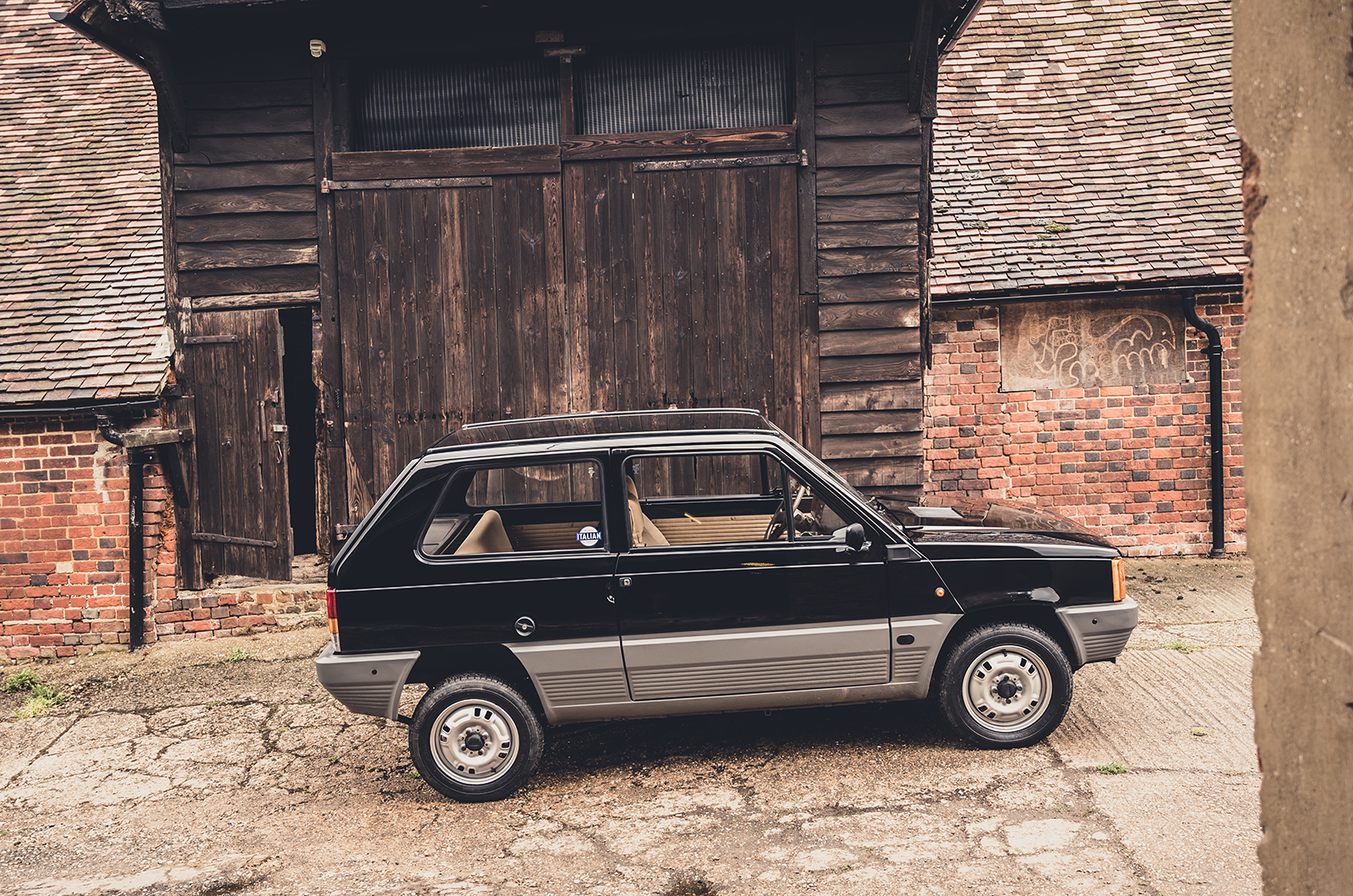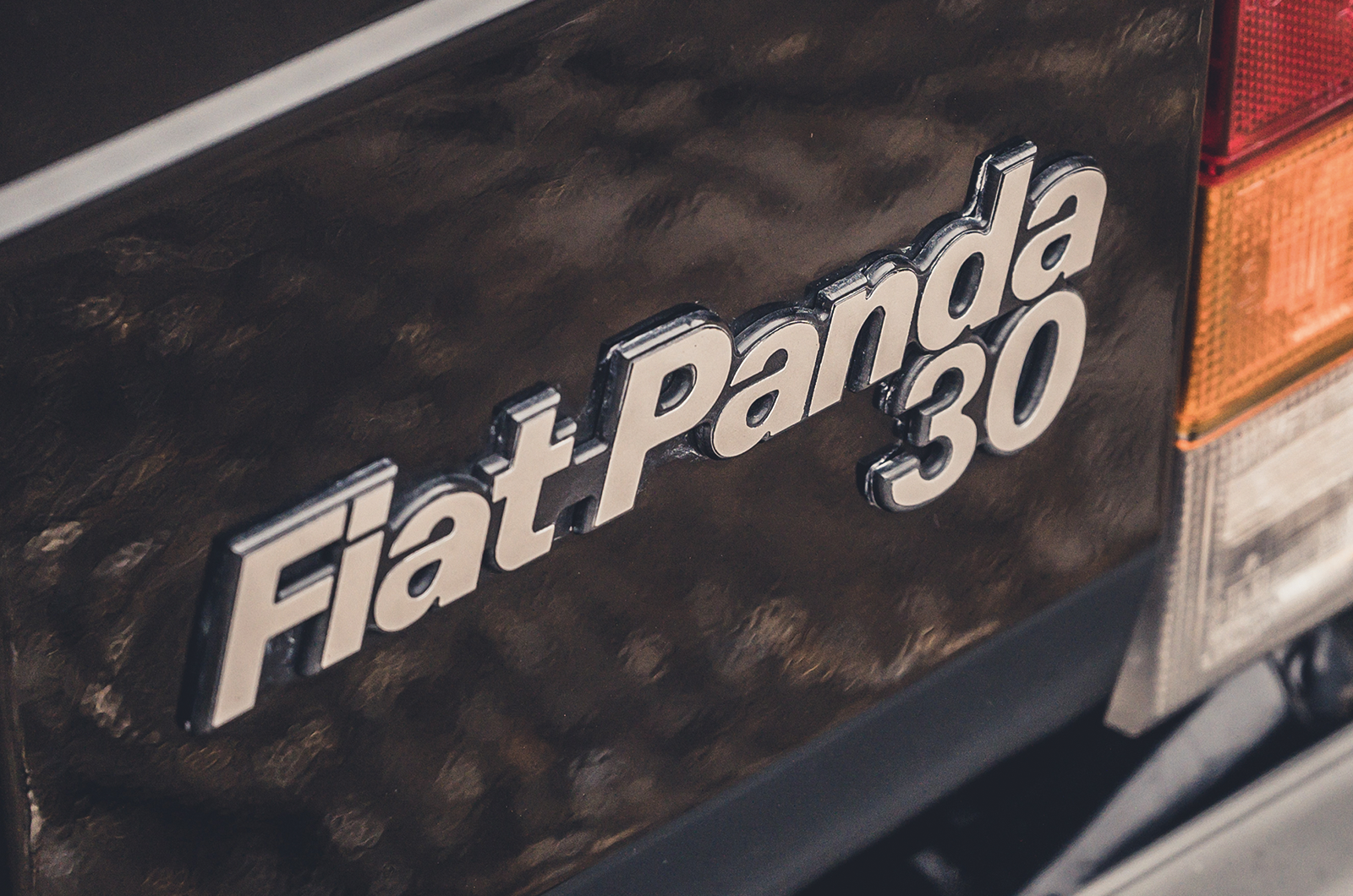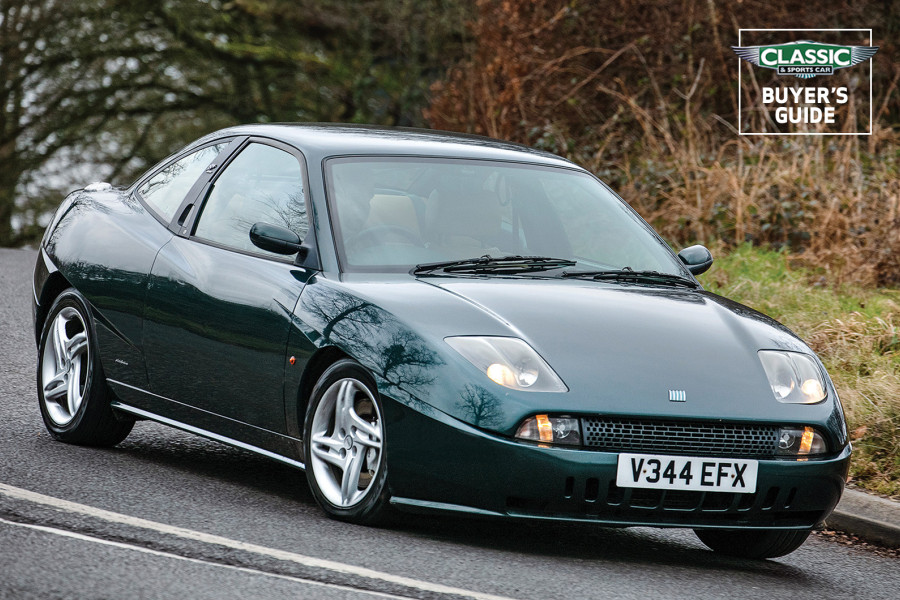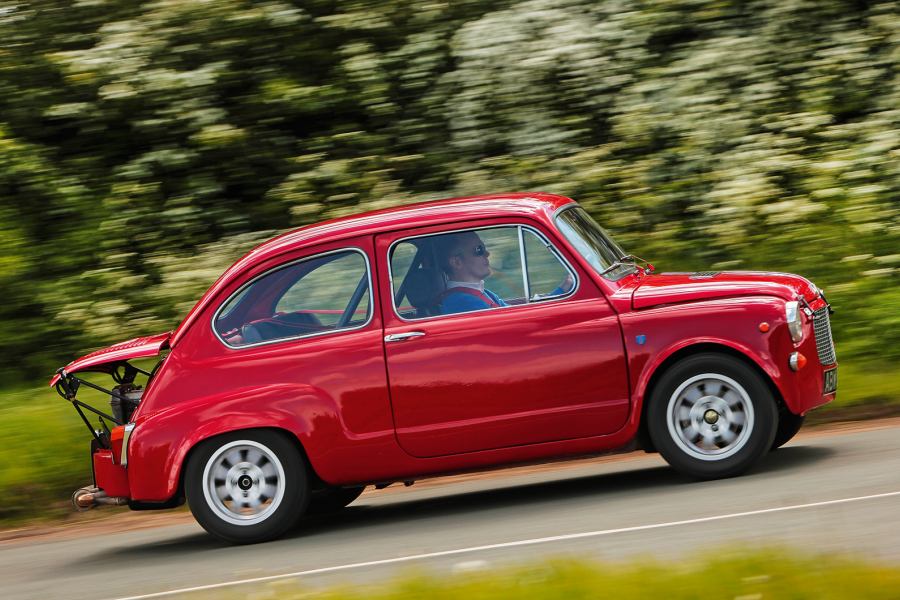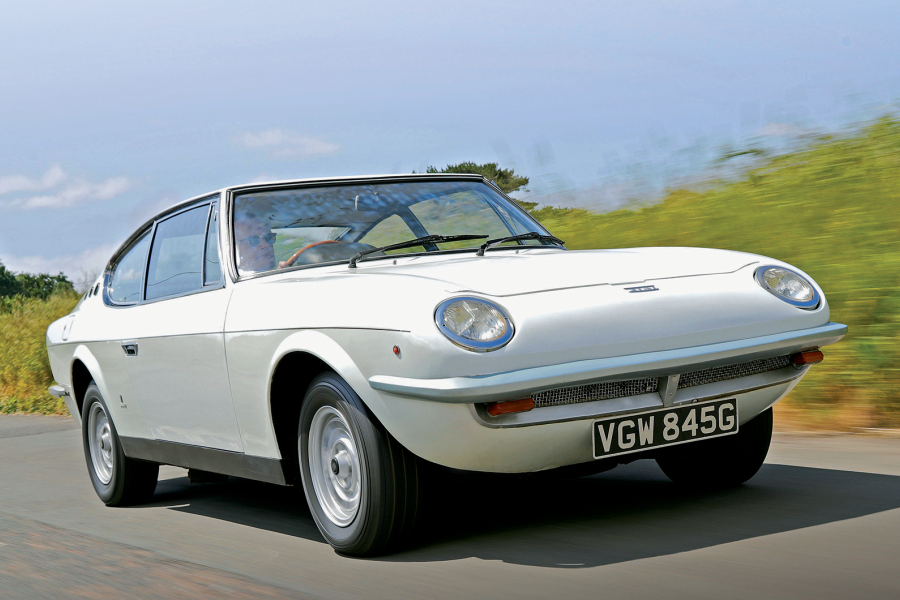There was a practical reason for this: the large axial-flow fan for air-cooling was to the left of the engine bay, whereas the radiator for water cooling was to the right.
Viewed in profile, the Panda’s short overhangs front and rear emphasise its box-like outline. Nevertheless, it is chunkily attractive.
The doors articulate through 65º for ease of access, and while the interior is spartan it packs some neat touches.
The fascia-cum-tray offers useful storage space and is lined in washable fabric, for example, and the rear seats can also be folded down in various ways.
Wheel and suspension intrusion into the loading bay is kept to a minimum thanks to the leaf-spring location and inclined rear dampers.
It’s comfy up front, too, at least on short trips. By contemporary standards, you do feel a bit perched, but there are no obvious ergonomic quirks.
With the choke extended, the tiny two-cylinder doesn’t exactly erupt into life. As its owner, Andy Heywood, managing director of specialist McGrath Maserati, quips: “If anything, the starter appears to be more powerful.”
Clutch travel is surprisingly long, too, and light with it. Initial take off amounts to a bunnyhop, but the Panda’s raspy character soon encourages what you might euphemistically call ‘enterprising driving’. In essence, that means you don’t lift for anything.
Given its meagre power output, the Panda is in no way fast. Not even close: 0-60mph takes 36 secs on to a top speed of a heady 71mph.
But nor do you feel as though you’re holding up traffic; there are no burning cheeks of shame here. Four-up and with luggage it would probably be a different story, but it doesn’t feel particularly slow when flying solo.
The gearchange is less rubbery than you might imagine, at least when compared to most other small Fiats from yesteryear, and there’s a surprisingly short throw between planes.
Maintaining momentum is everything, and, once at cruising speeds, it seems perfectly happy chugging along, all the while emitting an agreeable bark from the peashooter exhaust.
The ride quality is better than you might imagine, and it’s only when traversing rutted country lanes that it gets a little bouncy.
Even then, it isn’t to the point that your head makes contact with the headliner. Body roll is kept in check, though the seats aren’t overly supportive.
Autocar summed it up perfectly in the 1980s when it stated: ‘[The Panda is] versatile and, above all, a reminder of what Fiats can be – fun.’
And it is. More than anything, it reminds you that pleasure can be reaped from the ordinary; that you don’t need mega horsepower to enjoy driving.
The Panda is that rarest of things: an icon that lives up to the billing.
Images: Olgun Kordal
Thanks to Andy Heywood
Factfile
Fiat Panda 30
- Sold/number built 1980-2003/4.5m (all)
- Construction steel monocoque
- Engine iron-block, alloy-head, ohv, air-cooled 652cc twin, single Weber 30DGF 1/250
- Max power 30bhp @ 5500rpm
- Max torque 30Ib ft @ 3000rpm
- Transmission four-speed manual, FWD
- Suspension: front independent, by MacPherson struts rear beam axle, leaf springs, telescopic dampers
- Steering rack and pinion
- Brakes discs front, drums rear
- Length 11ft 1in (3380mm)
- Width 4ft 9½in (1460mm)
- Height 4ft 9in (1440mm)
- Wheelbase 7ft 1in (2160mm)
- Weight 1433Ib (650kg)
- 0-60mph 36 secs
- Top speed 71mph
- Mpg 52
- Price new £2860 (1981)
- Price now £3-10,000*
*Prices correct at date of original publication
READ MORE
25 classics that turned 50 in 2020
Reality bites: Italdesign Aztec
100 years of Mazda
Richard Heseltine
Richard Heseltine is a long-time contributor to Classic & Sports Car
